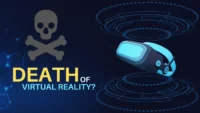12 Virtual Reality Advantages And Disadvantages (2025)
Published: 23 Mar 2025
Virtual reality reshapes our world, blending innovation with challenges. By 2025, its transformative advantages and notable disadvantages will spark discussions about accessibility, impact, and ethical concerns. This article will explore 12 pivotal aspects of VR, examining how it shapes our lives today and in the future. Explore the pros and cons of VR in 2025!
12 Benefits of Virtual Reality You Must Know
Immersive Learning Experiences
Virtual Reality makes learning super fun and exciting by letting students explore new places and ideas as if they are really there.

Imagine learning about the solar system by “floating” in space and seeing the planets up close! With VR, students can explore history, science, or even different cultures without leaving their classrooms.
It’s like taking a field trip, but even better because the whole world (and beyond!) is at their fingertips. This helps make learning more enjoyable and easier to understand.
Risk-Free Practice
Virtual Reality lets students and professionals practice real-life skills without any danger.

For example, doctors can learn how to perform surgeries using VR without the risk of making mistakes on real patients.
Pilots can train to fly planes in VR without worrying about accidents. It’s like a safe space where you can make mistakes, learn from them, and improve your skills confidently.
This makes VR a powerful tool for gaining experience in a safe and controlled way.
Personalized Learning Experiences
Virtual Reality helps each student learn in a way that works best for them. It can adapt to their speed, interests, and learning style.

For example, a student who loves exploring might use VR to “visit” ancient pyramids while learning about history, while someone else might prefer solving puzzles in a virtual science lab.
This personal touch makes learning more effective and enjoyable because everyone can focus on what they need the most.
Hands-On Learning
Virtual Reality allows learners to actively participate instead of just watching or listening.

For example, students can use VR to build virtual machines, conduct experiments, or explore how things work by actually doing it themselves.
This “learning by doing” approach helps them understand and remember concepts much better than traditional methods. It’s like bringing lessons to life with exciting, hands-on experiences!
Flexibility and Accessibility
Virtual Reality makes learning and experiences available to more people, no matter where they are.

Students can join virtual classrooms from their homes, and people with disabilities can explore places or activities they might not be able to in real life.
Plus, VR allows learning to happen anytime day or night offering a flexible way to access knowledge and experiences. This makes education and opportunities accessible to everyone.
Reduces Costs and Environmental Impact
Virtual Reality helps save money and protect the environment by reducing the need for physical resources.

For example, people can use VR to connect and learn virtually instead of traveling long distances for training or meetings.
This saves money on travel and accommodation and reduces pollution caused by transportation. Additionally, VR can replace the need for physical materials, like paper or equipment, making it a greener, cost-effective solution.
Improves Retention and Recall
Virtual Reality helps people remember things better by making learning more interactive and engaging.
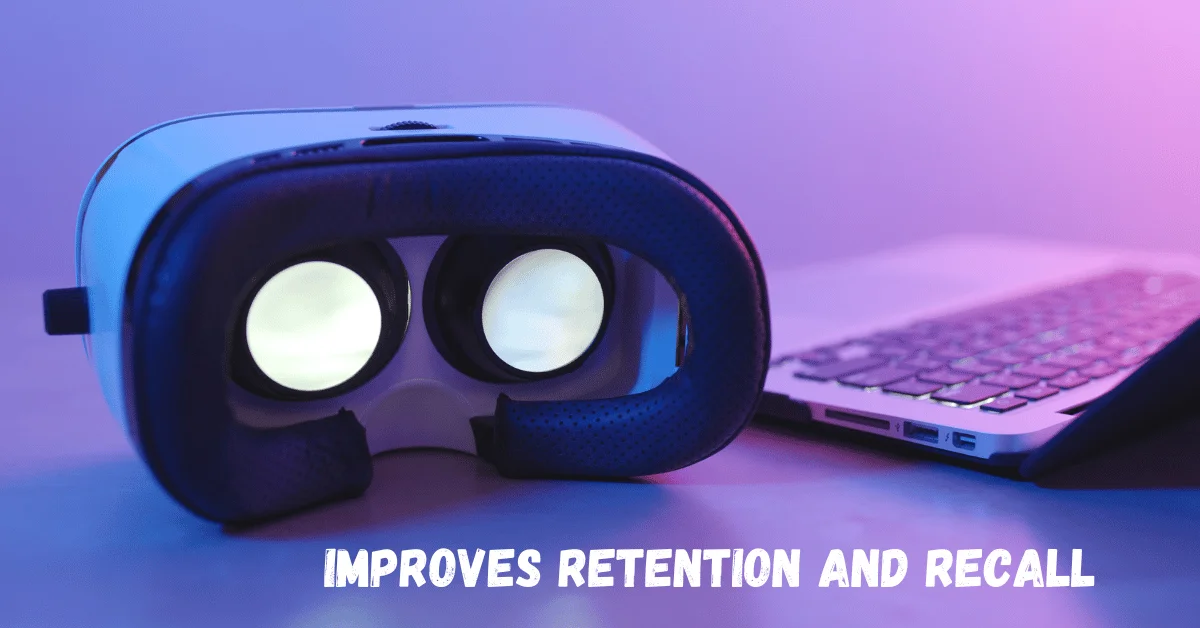
Instead of just reading or listening, learners experience concepts through VR, which makes the information stick in their minds.
For example, students might explore a virtual rainforest to study its plants and animals, creating vivid memories they can recall easily later.
This active involvement boosts understanding and improves long-term memory.
Enhances Collaboration and Communication
Virtual Reality makes working and learning with others more engaging and effective. It allows people to meet in virtual spaces, no matter where they are in the world.

For example, students can work together on group projects in a shared VR environment, or team members can hold virtual meetings where everyone feels like they’re in the same room.
This helps improve teamwork, communication, and the ability to share ideas in creative and interactive ways.
Provides Safe Learning Environments
Virtual Reality creates spaces where people can learn without facing real-world risks.
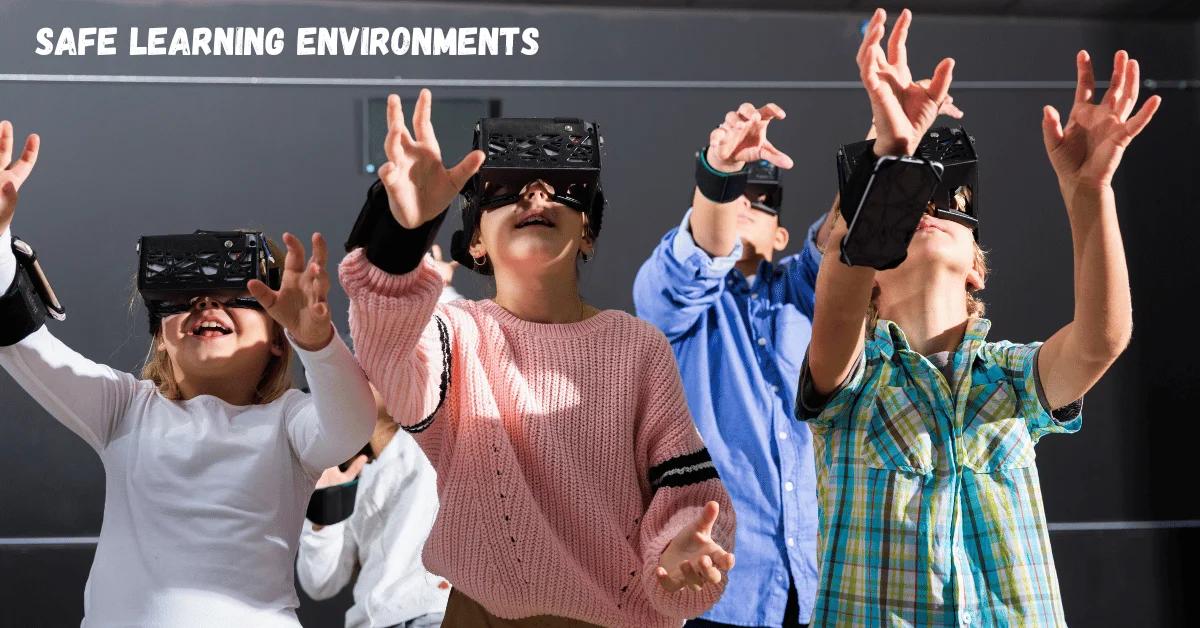
For example, firefighters can practice putting out fires in a virtual setting without any danger, and students can perform science experiments in VR without worrying about spills or accidents.
These safe environments allow learners to explore, make mistakes, and gain confidence without fear of harm, making learning both effective and secure.
Prepares Students for Future Careers
Virtual Reality helps students get ready for the jobs of tomorrow by giving them practical, hands-on experiences.

For example, aspiring engineers can use VR to design and test machines, while future doctors can practice surgeries in realistic virtual settings.
This technology also introduces students to advanced tools and skills they might use in their careers, such as teamwork in virtual spaces or solving problems creatively.
With VR, students can gain valuable experience and confidence in the professional world.
Fosters Empathy and Understanding
Virtual Reality allows people to experience the world from someone else’s perspective.

For example, users can step into a virtual simulation that shows what life is like for someone with disabilities or who lives in a different culture. This helps people feel empathy and understand the challenges others face.
By seeing and experiencing things through someone else’s eyes, VR encourages kindness and better connections between people from all walks of life.
Supports Physical Rehabilitation
Virtual Reality is a helpful tool for people recovering from injuries or illnesses. It can create fun and interactive exercises that encourage patients to move and rebuild their strength.

For example, someone learning to walk again might use VR to practice stepping through a virtual park, feeling motivated by the immersive experience.
It’s a safe and engaging way to make recovery smoother and more enjoyable.
12 Disadvantages of Virtual Reality You Must Know
Cost
Virtual reality comes with a high price tag, making it less accessible for many people.

The equipment needed for a good VR experience, such as headsets, motion controllers, and high-powered computers, can be very expensive.
Some advanced VR systems may cost hundreds or even thousands of dollars. Additionally, the cost doesn’t stop at just buying the hardware.
Many VR games, apps, and experiences require extra purchases, adding to the overall expense. This high cost can create a barrier, especially for students, families, or people with limited budgets, preventing them from enjoying or exploring VR technology.
Technical Difficulties
One major disadvantage of virtual reality is the frequent technical difficulties that users can encounter. VR systems require advanced technology and precise setups to work smoothly.
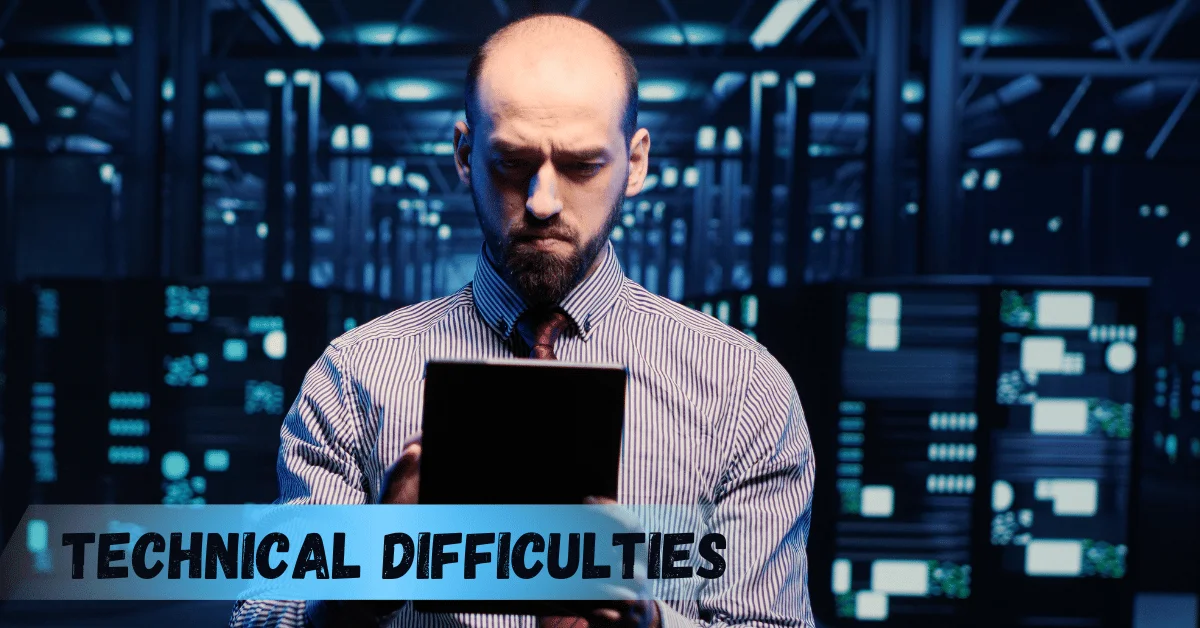
Even small issues, like software glitches, hardware malfunctions, or connectivity problems, can disrupt the entire experience.
For example, sometimes the VR headset might not track movements correctly, or the visuals could lag, making the experience frustrating instead of enjoyable. Additionally, setting up a VR system can be complicated for people who aren’t tech-savvy, adding to the challenges.
Such technical difficulties make VR less user-friendly and can discourage people from adopting this technology.
Potential for Distractions
Virtual reality can be highly immersive, but this level of engagement also brings the potential for distractions.

Users might become so absorbed in the virtual world that they lose track of time or forget their surroundings in the real world.
This can be problematic, especially in situations where focus on real-life tasks or responsibilities is essential.
Additionally, for students or workers using VR for learning or job purposes, the entertaining elements of VR can sometimes shift attention away from the intended goals. Balancing the fun and functional aspects of VR remains a challenge, and its ability to captivate can sometimes hinder productivity.
Lack of Social Interaction
Virtual reality can limit real-world social interaction, as users often engage with VR alone rather than connecting with people around them.

Spending too much time in virtual environments can reduce opportunities for face-to-face communication, which is essential for building strong relationships and social skills.
Additionally, while VR offers virtual social spaces, these interactions can lack the depth and authenticity of real-world connections. Over-reliance on VR for socializing might make it harder for people to navigate real-life social situations or maintain meaningful bonds.
Health Concerns
Excessive use of virtual reality can lead to various health concerns. One common issue is eye strain or discomfort, caused by staring at screens within the VR headset for long periods.

Additionally, wearing the headset for extended sessions can result in headaches or dizziness, especially if the visuals are not well-calibrated.
Another concern is motion sickness. VR immerses users in virtual environments, but the disconnect between what the eyes see and what the body feels can make some users nauseous or disoriented. Over time, this can discourage people from using VR altogether.
Limited Content
One drawback of virtual reality is the limited amount of high-quality and diverse content available.

While VR technology has advanced quickly, the range of experiences, games, and applications is still quite narrow compared to traditional media. This can make the VR experience feel repetitive or less engaging over time.
In addition, creating VR content is a complex and costly process. Developers need significant resources and technical expertise to produce immersive and interactive experiences, which can slow down the release of new content.
As a result, users might struggle to find fresh, compelling options that meet their interests or needs.
Potential for Addiction
Virtual reality (VR) has the potential to become addictive for some users.

Its immersive nature can make people spend excessive amounts of time in virtual environments, often at the expense of real-world activities. This overuse can lead to neglecting responsibilities, relationships, or even personal health.
Moreover, the constant desire to escape into a virtual world can create dependency, where users feel more comfortable in VR than in reality. This can disrupt daily routines and make it harder for individuals to balance their virtual and real lives.
Security Concerns
VR raises significant security concerns.

As VR systems often require users to share personal data, such as their location, preferences, and even physical movements, this information can become vulnerable to hackers or data breaches.
If such sensitive data is mishandled, it could lead to privacy violations or identity theft.
Moreover, VR platforms may collect behavioral data to enhance user experiences, which could be misused if not properly safeguarded.
This makes it essential for companies to implement strict security measures to protect users’ privacy and ensure their safety while using VR technology.
Lack of Teacher Training
The lack of teacher training is a significant disadvantage when it comes to using virtual reality (VR) in education.

Many teachers are unfamiliar with the technology and may find it difficult to incorporate VR effectively into their lessons.
Without proper training, educators might struggle to set up the equipment, use the software, or design activities that engage students meaningfully.
This gap in knowledge can lead to underutilized VR tools, limiting the technology’s potential to enhance learning.
Schools and institutions need to invest in professional development programs to help teachers gain the skills they need to use VR confidently and successfully in the classroom.
Digital Divide
The digital divide is a significant challenge when it comes to virtual reality. VR technology is often expensive and requires advanced hardware, such as high-performance computers and headsets.
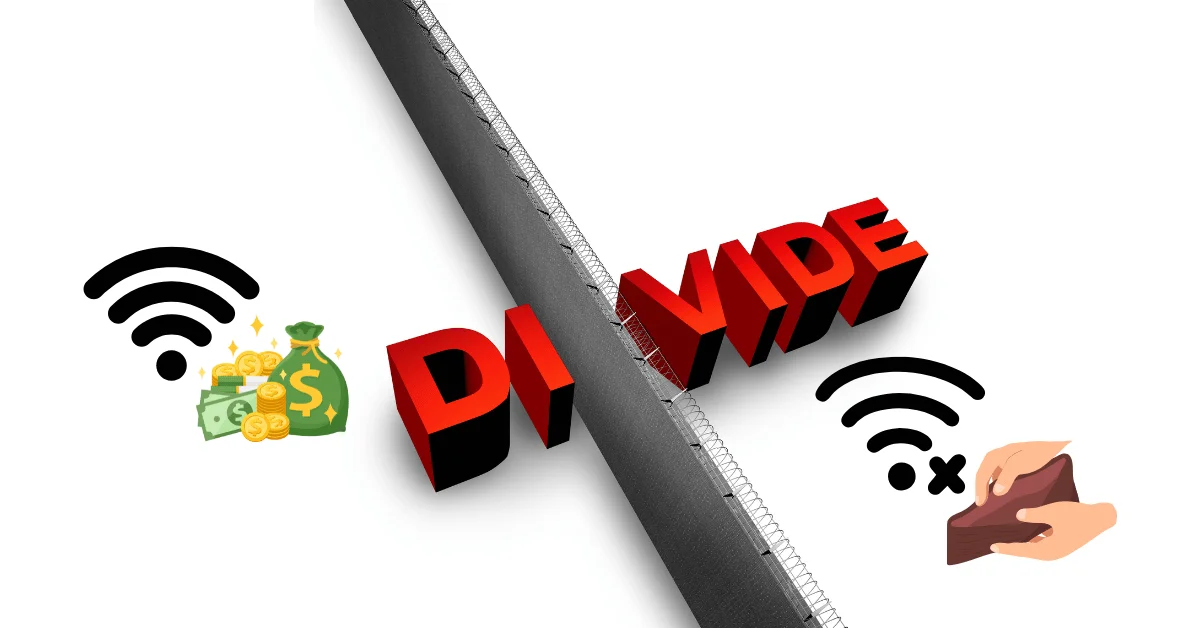
This makes it difficult for people in low-income communities or developing regions to access and benefit from VR experiences.
In addition to the cost, access to reliable electricity and high-speed internet, which are crucial for using VR, is limited in many parts of the world.
This unequal access widens the gap between those who can explore VR’s potential for learning, work, or entertainment and those who cannot, further deepening social and economic inequalities.
Dependency on Electricity
Virtual reality (VR) relies heavily on electricity to function, which can be a significant disadvantage. All VR equipment, including headsets, computers, and motion sensors, needs a stable power source to operate.

In areas with frequent power outages or unreliable electricity, using VR can be frustrating or even impossible.
This dependency also makes VR less environmentally friendly, as increased electricity usage contributes to energy consumption and potentially higher carbon emissions.
For users in regions with high electricity costs, this reliance on power can add to the overall expense of using VR.
Ethical Concerns
Virtual reality (VR) brings several ethical concerns that need careful consideration. One of the primary issues is the creation and use of VR content that includes violent, inappropriate, or harmful experiences.

Such content could negatively influence users’ behavior, especially younger audiences, and raise questions about the responsibilities of VR creators and providers.
Another ethical concern revolves around privacy. VR systems often collect personal data, such as movements, preferences, and interactions within virtual environments.
If this data is misused or improperly shared, it could lead to serious privacy violations.
Finally, there are concerns about the potential for manipulation. In VR, experiences are fully controlled by creators, and they could be used to mislead or manipulate users’ emotions, thoughts, or beliefs, whether for commercial, political, or other agendas.
These concerns highlight the need for clear guidelines and responsible practices in developing and using VR technology.
Conclusion
Virtual reality (VR) is an incredible technology, but it comes with both good and bad sides. It offers exciting ways to learn, play, and connect, but it also raises issues like cost, health risks, and limited access. As VR keeps growing, understanding its benefits and challenges will help us use it wisely.
No. While VR simulates reality effectively, it lacks tangible sensations (e.g., touch, smell) and genuine human connections, making it a supplement, not a replacement, for real-life experiences.
Excessive VR use may cause dissociation or addiction, but controlled, purposeful engagement (e.g., therapy, mindfulness apps) can improve mental well-being.
Yes. High costs and tech requirements exclude low-income users, deepening inequality in education, healthcare, and career opportunities tied to VR.
Potentially. Immersive environments could exploit cognitive biases (e.g., propaganda, false memories), demanding ethical regulations.
It’s caused by sensory mismatch (eyes see motion; body feels stillness). Future headsets with better latency, frame rates, and haptics may reduce this.
Unlikely. VR enhances hands-on learning but can’t replicate teacher-student bonding or the adaptability of in-person instruction.
Prolonged use may weaken real-world motor skills or posture, but VR fitness apps (e.g., Beat Saber) also promote activity.
It can deepen empathy (e.g., walking in someone’s shoes virtually), but without real-world action, the effect may be short-lived.
Currently, VR companies do. Lack of transparency raises privacy risks; users should demand control over their biometric and behavioral data.
Not yet. Energy-intensive hardware and e-waste from obsolete devices clash with sustainability goals, requiring greener design innovations.

- Be Respectful
- Stay Relevant
- Stay Positive
- True Feedback
- Encourage Discussion
- Avoid Spamming
- No Fake News
- Don't Copy-Paste
- No Personal Attacks

- Be Respectful
- Stay Relevant
- Stay Positive
- True Feedback
- Encourage Discussion
- Avoid Spamming
- No Fake News
- Don't Copy-Paste
- No Personal Attacks



